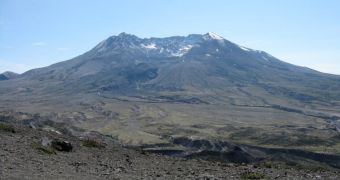Using funds from the US National Science Foundation (NSF), a team of investigators at the Georgia Institute of Technology (Georgia Tech) have recently taken a closer look at how volcanic ash forms, and have realized that the existing wisdom on the issue is wrong.
For many years, scientists had believed the amount and size of ash particles released during volcanic eruptions were determined by the fragmentation process that occurred when bubbly magma from underground chambers first made its way to the surface, and changed into gas-particle flows.
But results from the new Georgia Tech study suggest the view may be erroneous. The group believes that the amount of ash that will be injected into the atmosphere following an eruption is dictated by a process much more complex than originally suspected.
Both factors (size and amount) in fact depend on what happens as the ash particles race towards the surface. Their initial size is an important factor, as is the depth at which they were produced. Collisions they have with each other along the way also play an important role in determining their attributes.
The interplays between these factors are what ultimately decide whether ash produced underground will turn into a bubble-rich rock called pumice, or will come out of the caldera as part of a thick and dense plume of ash.
Additional details concerning these complex processes are published in the latest issue of the top journal Nature Geoscience. The conclusions of the research are based on lab experiments, field test results and computer simulations, Georgia Tech assistant professor and study author, Josef Dufek, says.
He and his team focused their attention on a process called granular disruption, which occurs during volcanic eruptions, and deals with the way in which particles break up. Some of his colleagues included University of California in Berkeley (UCB) investigators Michael Manga and Ameeta Patel.
“The longer these particles stay in the conduit, the more often they collide with each other. These high-energy collisions break the volcanic particles into fractions of their original size. That’s why deeper fragmentations produce small particles,” Dufek explains.
“Particles that begin closer to the surface with less energy don’t have time for as many collisions before they exit the volcano. They stay more intact, are larger and often contained in pyroclastic flows,” concludes the expert, also a faculty member in the Georgia Tech School of Earth and Atmospheric Sciences.

 14 DAY TRIAL //
14 DAY TRIAL //